Keeping Safe While Installing Signs
Sign Installation:
Sign installation is inherently risky because it is often at height. You may already be aware of the more common risks associated with it, such as falling from height, dropping tools or objects, and in the case of installing signs with lighting – the risk of being electrocuted.
Working at a height is dangerous – and causes the most injuries and fatalities in the workplace.
Implementing health and safety procedures:
Having a health and safety policy in place is vital to any company with five or more employees. A health and safety policy clearly explains how you, the employer, will manage all aspects of health and safety within the business. It should clearly outline health and safety arrangements within a company and how these will be disseminated throughout the company to all levels.
A health and safety policy sets out the general approach to health and safety. It explains how an employer will manage health and safety in your business.
Method statements/safe systems of work:
A method statement, (or safe system of work) is a document that describes how to complete a task safely. It is essentially a set of instructions for the work that is going to be undertaken on site or in a business setting i.e. a warehouse.
For work carried out at height, a method statement would include health and safety information, as well as specific instructions on how the work would take place and the equipment for working at height that is going to be used.
It is a crucial tool in recording the potential hazards of sign installation, and ensuring that the necessary precautions are communicated to all sign installers.
Precautions that should be used before use:
- All operatives working at height must be trained and competent in working at height and for equipment they are using / erecting i.e. tower scaffold.
- Use suitable and stable equipment that is safe to use for the work task – a tower scaffold platform or similar safe working platform.
- Class 1 or EN131 work at height equipment to be used when a platform is not suitable.
- Maintain three points of contact when accessing/ egressing equipment.
- Maintain three points of contact at the working position of ladders/step ladders.
- Ensure workers can get safely to and from the height they are working.
- Make sure precautions are taken when near or on fragile surfaces.
- Provide protection from objects which are likely to fall from above.
You must not:
- Overloading equipment (check the labels or guidebooks for information)
- Overreaching on ladders or stepladders.
- Leaning equipment on unstable surfaces.
- Using ladders for extended periods of time (only use for a maximum of 30 minutes at a time)
- Unqualified workers without the knowledge or skills to work at height.
Additional control measures:
Additional control measures may be needed to minimise the risk of accidents on individual installation projects:
Robust site specific risk assessments must be completed by a competent person who has the knowledge and understanding of health and safety and the work being completed on site. The risk assessments must include control measures for all known hazards and how the risks will be reduced to their lowest possible minimum before work commences on site. A site specific or pre task risk assessment should be completed at the workforce before commencing work on site and this must incorporate any hazards outlined by the estimator / surveyor.
The estimator / surveyor is the first person to assess the risks on site before any work is undertaken. A pre-work / survey can be completed to assess any risks evident that would need controlling before any work starts on site. A checklist can be completed and the findings communicated to the relevant sign installers before any work starts on site and this will build a strong base for the risk assessments and pre task / site specific risk assessment.
These could include:
- Pedestrian signage to warn pedestrians of dangers such as falling debris.
- Path/road closures to ensure no pedestrians are in an unsafe place.
- Mesh nets to catch any items that fall (especially in heavily populated areas.)
- Having the right equipment for the job, (the estimator must discern whether the job calls for the use of plant, such as a scissor lift or cherry picker, or can be done with a tower scaffold, a ladder or step ladder)
- Watch for adverse weather conditions in case it proves too dangerous to work at height (extreme winds or rain could provide an unstable or slippery surface)
Training:
It’s an employer’s obligation under the Health and Safety at Work Act to make sure their employees are properly trained. Employees have to understand the risks involved in their work, and how to avoid them, in order to be compliant with health and safety protocol.
If you would like to learn more, follow the links for our quick, easy and cost-effective eLearning courses or contact us direct and we have assist you in choosing the right courses and will invoice you direct.
- General working at height training https://videotilehost.com/optimum-safety/purchaseCourse.php?nid=27
- Asbestos awareness https://videotilehost.com/optimum-safety/purchaseCourse.php?nid=2
- Manual handling https://videotilehost.com/optimum-safety/purchaseCourse.php?nid=9
General Conclusion:
Installing signs can be a dangerous task with a lot of risk involved. Installers need to be prepared and adequately trained to carry out the job safely, with equipment that’s safe and suitable. It is vital that every workplace has a health and safety procedure and a method statement, and it is even more important that these are followed to ensure site safety.
For more information please don’t hesitate to contact us and we will endeavor to assist you with as least disruption to your business as possible.




 European Sign Federation
European Sign Federation